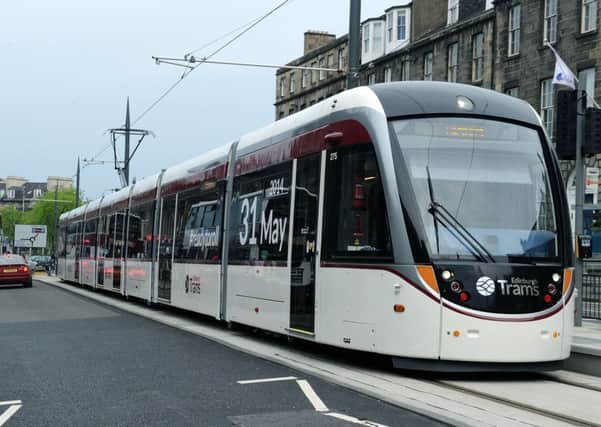David Alexander: Sunshine on Leith '“ with or without trams
This article contains affiliate links. We may earn a small commission on items purchased through this article, but that does not affect our editorial judgement.


It may come as a surprise that trams on this ancient highway were also a source of angst a century ago.
Leith then was an independent burgh with an electrified tram system markedly superior to Edinburgh’s slow and cumbersome cable cars. This entailed an unpopular change of vehicle on the boundary at Pilrig, a situation which lasted until 1922 when Edinburgh Corporation began electrifying the cable tramway.
Advertisement
Hide AdAdvertisement
Hide AdBy this time, however, Leith had been annexed to its larger neighbour (despite its citizens voting four to one against in a local plebiscite) yet even today the port retains, to a large extent, its separate identity and culture.
I have a fondness for Leith, having launched my business there 35 years ago. It was an inauspicious start given that Edinburgh was undergoing a rare local property recession, the solicitor old boy network was hostile to this estate agency upstart, and installation of the plate glass window meant to showcase my wares was inexplicably late. Nevertheless my choice of location was fundamentally sound because this was a market changing for the better, young singles and couples being drawn to a number of warehouse conversions and new-build apartment blocks and bringing a fresh injection of life to what was fast becoming a post-industrial community.
That was the days when there were aspirations for “Leith-sur-Mer” to become Edinburgh’s exclusive waterside district. It never happened to the extent some hoped, yet the market in Leith has remained resilient over the past three decades.
At least Leith did not become a short-lived “fad”, as could have happened as a result of competition for the “yuppie” pound from subsequent new-build projects in areas such as the Meadows and west-central Edinburgh. A general increase in new apartment projects elsewhere in the city has inevitably had some effect on price growth in Leith but not to any great extent.
Not all the warehouse conversions in Leith have been residential; some have been given over to commercial development housing a myriad of small commercial enterprises offering creative services such as digital design, marketing and PR. And because a large number of people in this type of employment tend to be transient, demand for rental accommodation is also buoyant.
Thus landlords can presume regular rental income with few voids and while capital growth might not be as great as some other parts of the city it tends to be steady. This popularity extends to traditional tenement flats on Leith Walk and the streets just off.
Advertisement
Hide AdAdvertisement
Hide AdRacial and cultural diversity is a controversial subject right now but Leith seems to have got the balance right with the variety of foreign-owned shops and other businesses on the Walk being an attraction. Leith’s wide range of restaurants – which includes the Michelin-starred Tom Kitchin and Martin Wishart – are an added drawing point.
Leith is more than just new-build, converted and traditional apartment buildings; local stock also includes a number of Georgian and Regency houses, especially on or close to the open parkland of Leith Links, which offer all the benefits of similar properties in Edinburgh proper but perhaps more competitively priced. This has helped maintain a balanced community – a few well-heeled streets; a large and varied stock of flats occupied by young professional and skilled manual workers, and the lower-cost private- and public-sector housing in the central area around Great Junction Street.
Consequently, in the words of The Proclaimers, “Sunshine on Leith” looks likely for many years to come – trams or no trams.
• David Alexander is managing director of DJ Alexander